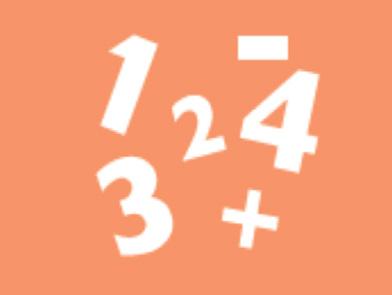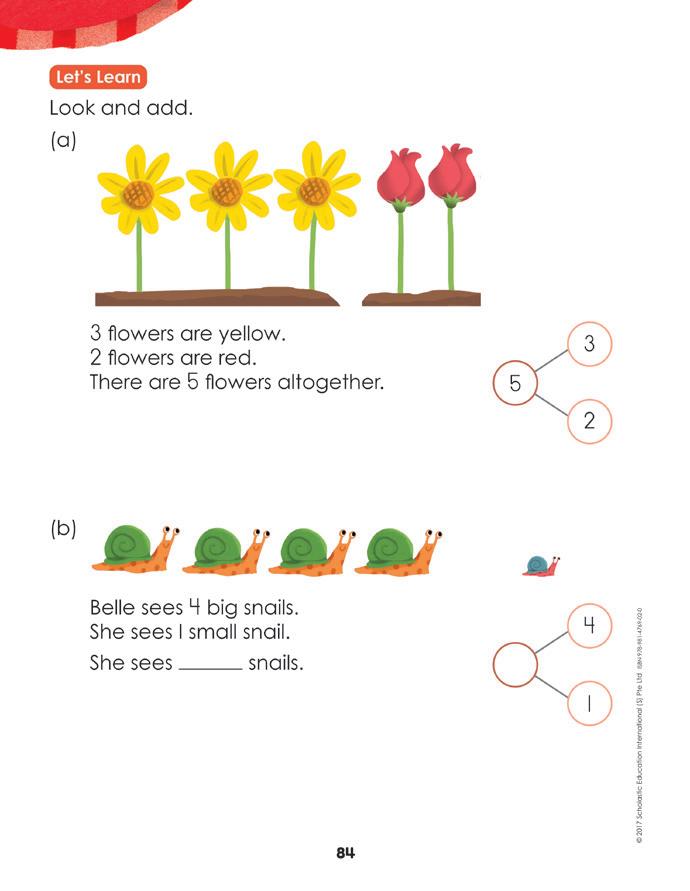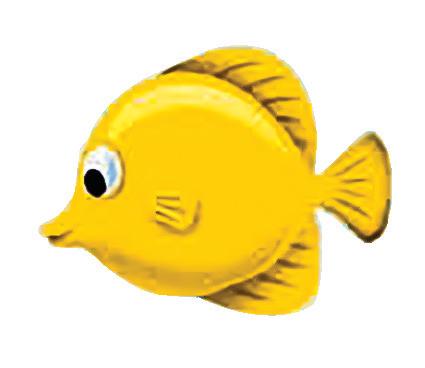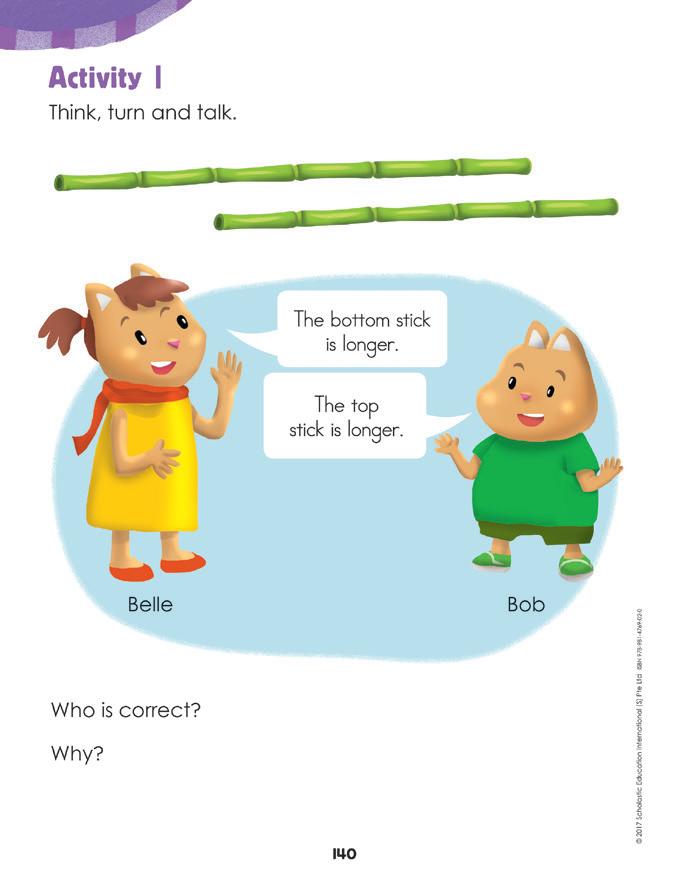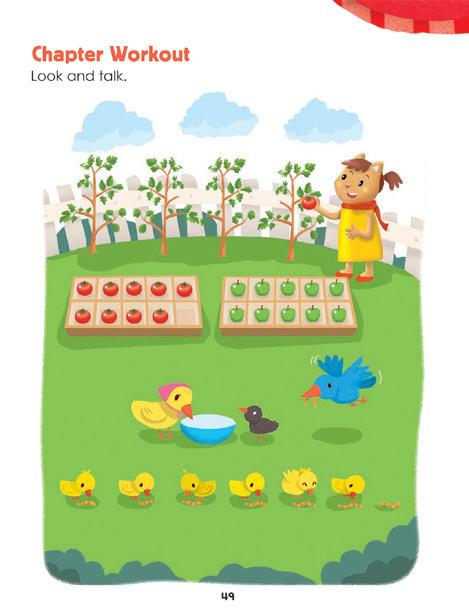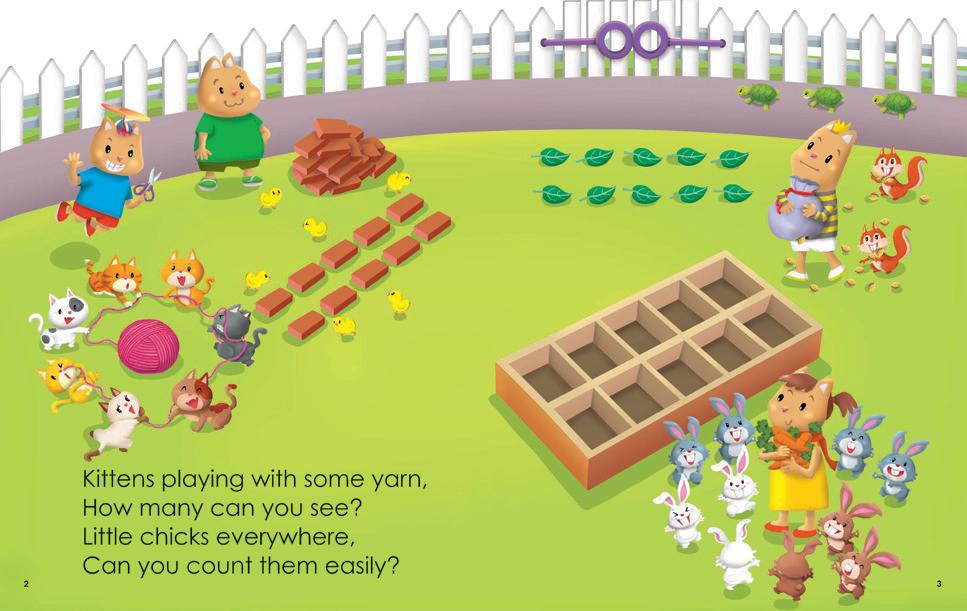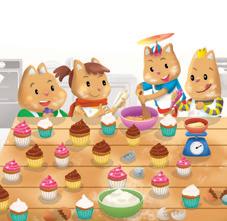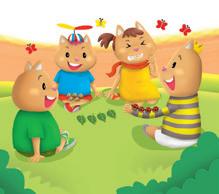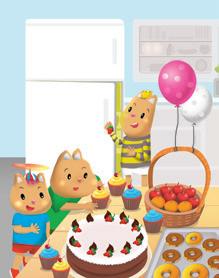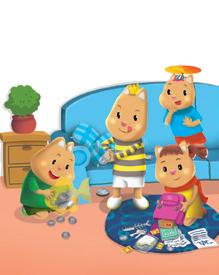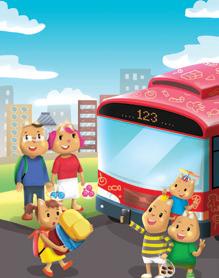PROBLEM SOLVING IS CENTRAL
In PR1ME K, problem solving challenges students to:
• apply acquired knowledge to solve problems
• adapt and communicate their thinking clearly.
THE TEACHING-LEARNING CYCLE
EVERY DAY
Carefully structured daily lessons incorporate a warm-up, revision of previously taught concepts and skills and activities to stimulate learning.
EVERY
CHAPTER
PROBLEM SOLVING
Problem Solving
in Action: Student Books
Activities at the end of each chapter are designed for consolidation, but also incorporate problem-solving skills.
Students reason mathematically by explaining their thinking to others. PR1ME K encourages students to communicate their ideas, clarify their thoughts and share their mathematical thinking to deepen mathematical thinking skills.
Simple language challenges deep thinking.
The Teacher’s Guide provides detailed prompts to use while leading the mathematical discussion.
The Chapter Workout is a whole class discussion led by the teacher that prompts students to explain and justify their mathematical reasoning.
The Think, Turn and Talk activity challenges common misconceptions in order to strengthen mathematical thinking.
Problem Solving Big Books
The Big Books and accompanying materials are designed to be used for a one-hour lesson after completing each chapter.
Comprehensive activities outlined in the Teacher’s Guide help create a problem-solving mindset through the application of concepts to ageappropriate real-world scenarios.
How many tomatoes and apples are in the boxes?
Are there more tomatoes or more apples?
How many worms are in the bowl?
Are there fewer birds or worms?
Formative assessment built into each day’s lesson checks for readiness to learn new concepts.
(in the Student Books) The Problem Solving Big Books help students apply the concepts learnt in a variety of engaging character-led contexts.
The Chapter Workout is a whole class discussion led by the teacher that prompts students to explain and justify their mathematical reasoning.
CHAPTER WORKOUT & LEARNING
Carefully scaffolded learning and guided practice is monitored in Let’s Do each day.
The Think, Turn and Talk activity challenges common misconceptions in order to strengthen mathematical thinking. Activities at the end of each chapter are designed for consolidation.
A scope and sequence is available upon request.
“Any child can be taught any concept at any time –if the concept is presented in a form that is developmentally appropriate.”(Bruner, 1960).
FORMATIVE & SUMMATIVE ASSESSMENT
Both formative and summative assessment are integrated with instruction throughout the programme.
PR1ME K COMPONENTS
Student Books
The two Student Books together cover one school year of maths. The books neatly maintain a record of progress from initial introduction through to mastery.
Teacher’s Guides
The two Teacher’s Guides also cover one year of maths. These essential resources support teachers through effectively implementing the programme, and contain best practice principles and questions to use when delivering every lesson.
Problem-Solving Big Books
There are 20 Problem-Solving Big Books: one connected to each chapter topic throughout the year, along with two semester review titles that integrate many concepts. A comprehensive Teacher’s Guide accompanies the Big Books.
Evaluate learning at the end of Chapter Workout & with Big Book readers
Book A
Chapter 1: Counting Small Numbers
Chapter 2: Numbers 0 to 10
Chapter 3: Sorting and Surveys
Chapter 4: Breaking Apart Small Numbers (4 and 5)
Chapter 5: Addition and Subtraction Through 5
Chapter 6: Ordinal Numbers
Chapter 7: Measurement
Chapter 8: Counting Higher
Chapter 9: Calendar and Time
Book B
Chapter 10: Flat Shapes
Chapter 11: Patterns
Chapter 12: Breaking Apart Larger Numbers (6 to 9)
Chapter 13: Making 10
Chapter 14: Addition and Subtraction Through 10
Chapter 15: Solid Shapes
Chapter 16: Modelling and Composing Shapes
Chapter 17: Ten Ones and Some More Ones
Chapter 18: Money



